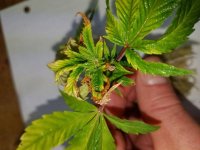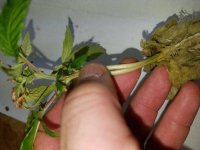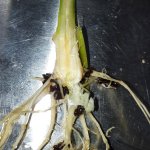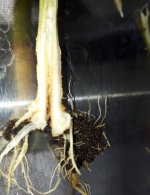Looks a bit like sodium to, but cuttings, with there lack of growth, can exhibit signs in ways we don't always expect. I'm not going to chase after the specific correction though, because this is hydro and your food should work.
I think your deficiency is a lack of food. Week one is listed as 900ppm and your using 200. I have tried peoples ideas about no or low food, and this is the result I find. You can't grow new tissue at 200ppm. I start rooting with around 500 and that's increases the moment I see significant growth. Take one of your cuttings, and feed it 600. You will see I'm right. Or that one gets over fed. It's worth risking a sacrifice.
I think your deficiency is a lack of food. Week one is listed as 900ppm and your using 200. I have tried peoples ideas about no or low food, and this is the result I find. You can't grow new tissue at 200ppm. I start rooting with around 500 and that's increases the moment I see significant growth. Take one of your cuttings, and feed it 600. You will see I'm right. Or that one gets over fed. It's worth risking a sacrifice.







